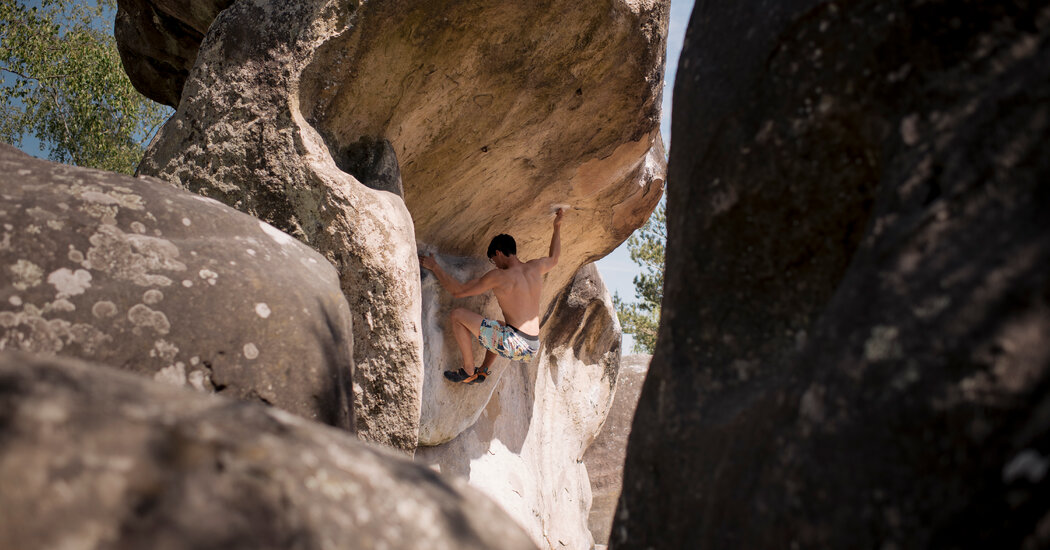In popular imagination, France’s Fontainebleau is inextricably linked to its grand Château. But when I visit, I typically skip it entirely. Yes, the 1,500-room Château de Fontainebleau that was inhabited by French kings and emperors for eight centuries may seem the most arresting attraction in this region 37 miles south of Paris. Instead, it’s the surrounding forest that entices me to return again and again.
The 50,000-acre Forest of Fontainebleau was once prized by the royals for its exceptional hunting grounds. Now it is France’s second largest national forest and part of the Fontainebleau & Gâtinais UNESCO Biosphere Reserve, drawing 15 million visitors annually for bouldering, trail running, forest bathing and other activities, thanks to a topography that combines forested, wet and dry environments, and three massifs — Fontainebleau, Les Trois Pignons and la Commanderie.
“We have traces of mankind and engravings dating back tens of thousands of years,” said Sophie David, an archaeologist and Forêt d’Exception project manager with the National Forestry Office, or O.N.F. “That history is exceptional, but so is the 12,000 species of plant and animal life that make it among the richest sources of biodiversity in Europe.”
My introduction to the forest was 17 years ago, with my then-boyfriend and now husband, Cédric, an avid climber. I have spent the years ever since working to better understand the legendary place the French simply call Bleau.
A geological wonder
My first visit was to Les Trois Pignons, on the forest’s western edge and among the most compelling sites for first-timers. I expected towering old-growth trees, mossy and lichen-covered woodlands, and a palpable air of mystery. I hadn’t anticipated the extraordinary geological diversity that awaited me.
From the Roche aux Sabots parking area, Cédric and I walked about 20 minutes on footpaths covered in sand, leaves and pine needles to reach Les Sables du Cul du Chien (literally, the sands of the dog’s ass), an immense waterless beach with fine sand more fitting of the Mediterranean. Surrounded by Scots pine and birch trees, the expanse was dotted with sandstone boulders of various shapes, sizes and levels of difficulty for climbing and hiking. The most iconic, as Cédric pointed out, was the Bilboquet. Resembling a cup-and-ball toy and isolated in the middle of the sandy clearing, the rock looked as if it had sprouted by magic. Wonder-struck visitors were snapping photos…
Click Here to Read the Full Original Article at NYT > Travel…
